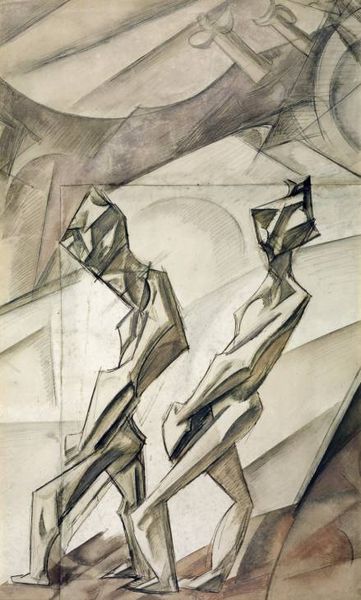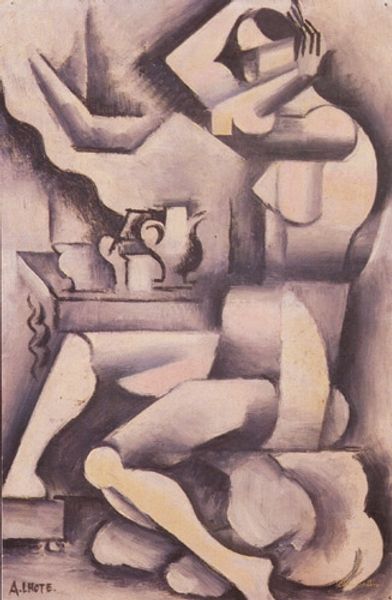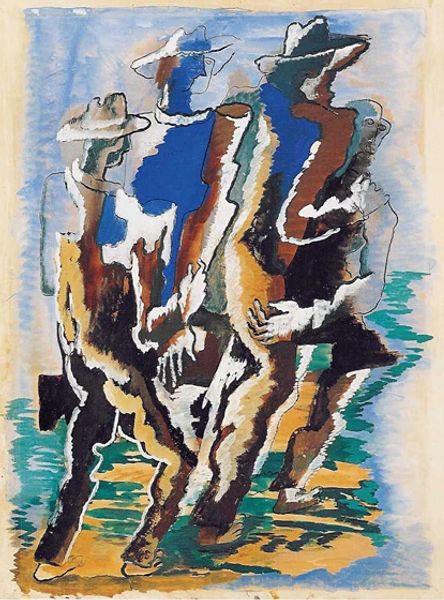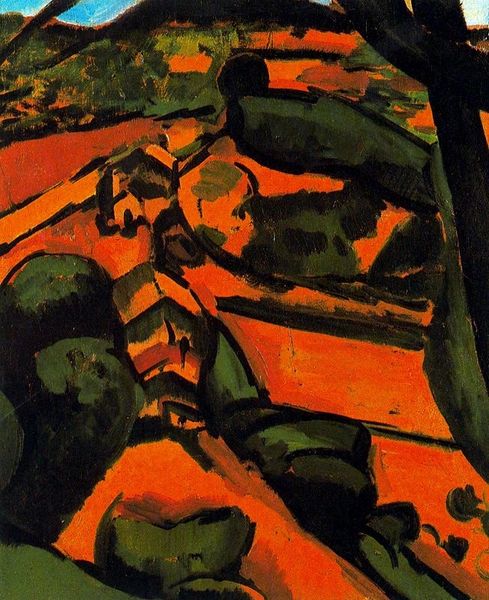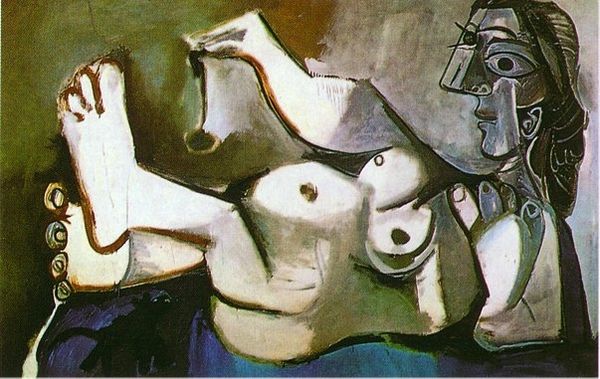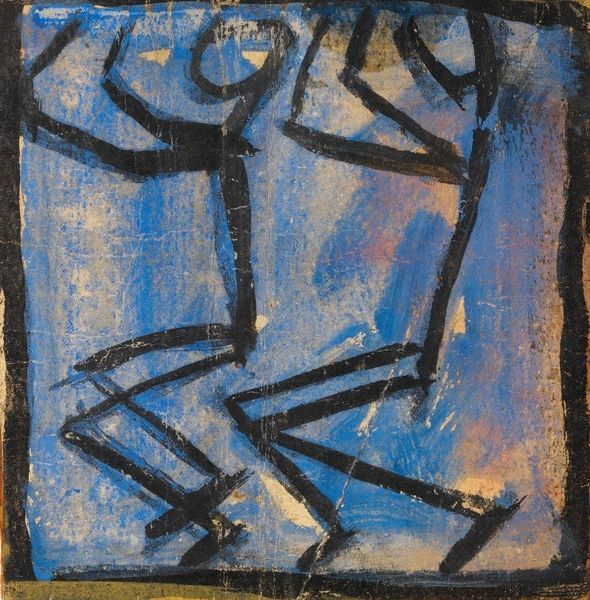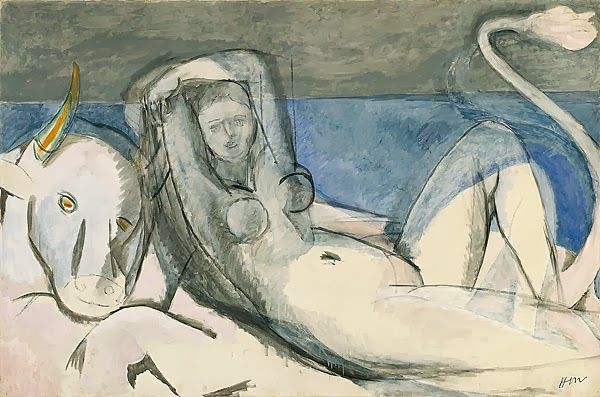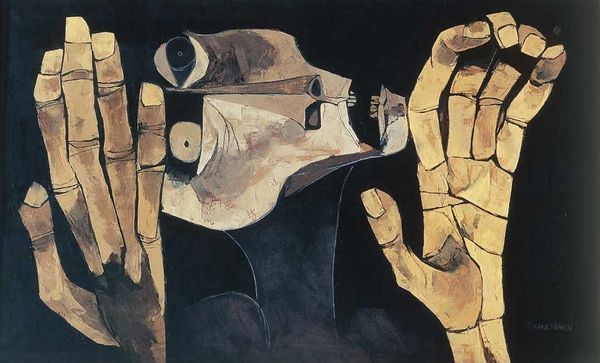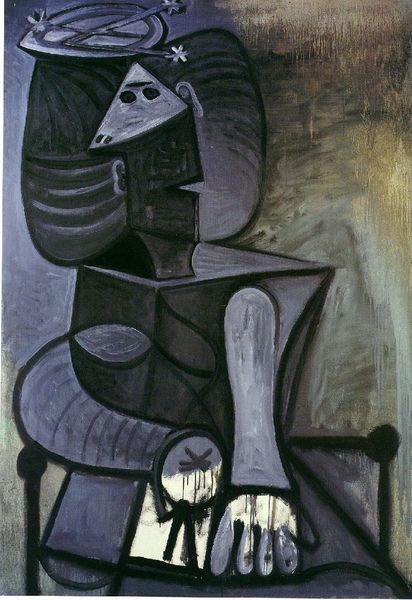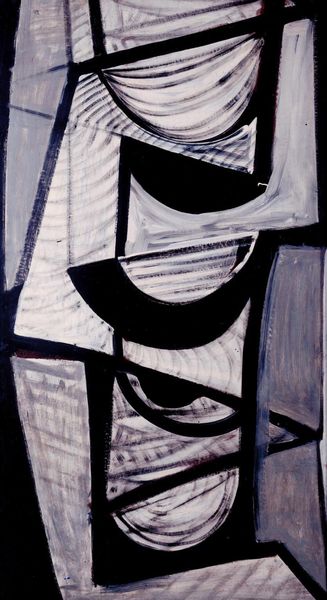
painting, oil-paint
#
portrait
#
cubism
#
painting
#
oil-paint
#
figuration
#
oil painting
#
female-nude
#
intimism
#
portrait drawing
#
nude
#
portrait art
#
modernism
#
fine art portrait
Dimensions: 130.5 x 162 cm
Copyright: Pablo Picasso,Fair Use
Curator: Here we have Picasso's "Reclining Woman," an oil on canvas painted in 1954. It's a compelling example of his later explorations within the Cubist idiom, and how he engages with representing the female nude. Editor: Wow. My first thought? She looks…uncomfortable. Like a yoga pose gone terribly, hilariously wrong. And those earthy tones give it this strangely raw, almost unfinished feel, don't you think? Curator: Well, it's precisely that kind of discomfiture, perhaps, that pushes us to reconsider conventional representations of the female body. Painted in the aftermath of World War II, this piece arrives amidst evolving understandings of female identity. We need to look at Picasso's complicated relationships, and the gaze he puts on display. Editor: I get that, sure. But there's something deeper for me too. The way her body's been broken down, fragmented. It's like looking at a deconstructed memory, or a dream you can't quite grasp. Is he exploring alienation here? The vulnerability of intimacy, perhaps? Curator: Intimacy is definitely key. Picasso was deeply influenced by the political events of the era. He presents the woman as both exposed and elusive, prompting a conversation about power dynamics and the male gaze. Consider her positioning in relation to, say, Ingres's odalisques. There's a complete overturning of idealized, passive femininity. Editor: So it's a feminist statement, maybe even a revolt against classical ideals. Despite the objectification implicit to the artistic practice, what can this painting still tell us about shifting perspectives on the role of women during mid-century? It has such intensity that the art still feels unfinished, maybe because the discussion continues still today. Curator: Exactly. The lasting value resides in the continuous engagement—both then and now—with the ever-present challenges to entrenched perspectives on women, both within art and in wider society. Editor: Yes! And perhaps too, Picasso reveals our inner Cubist, our own jumbled mess of perception, feeling, memory.
Comments
No comments
Be the first to comment and join the conversation on the ultimate creative platform.
